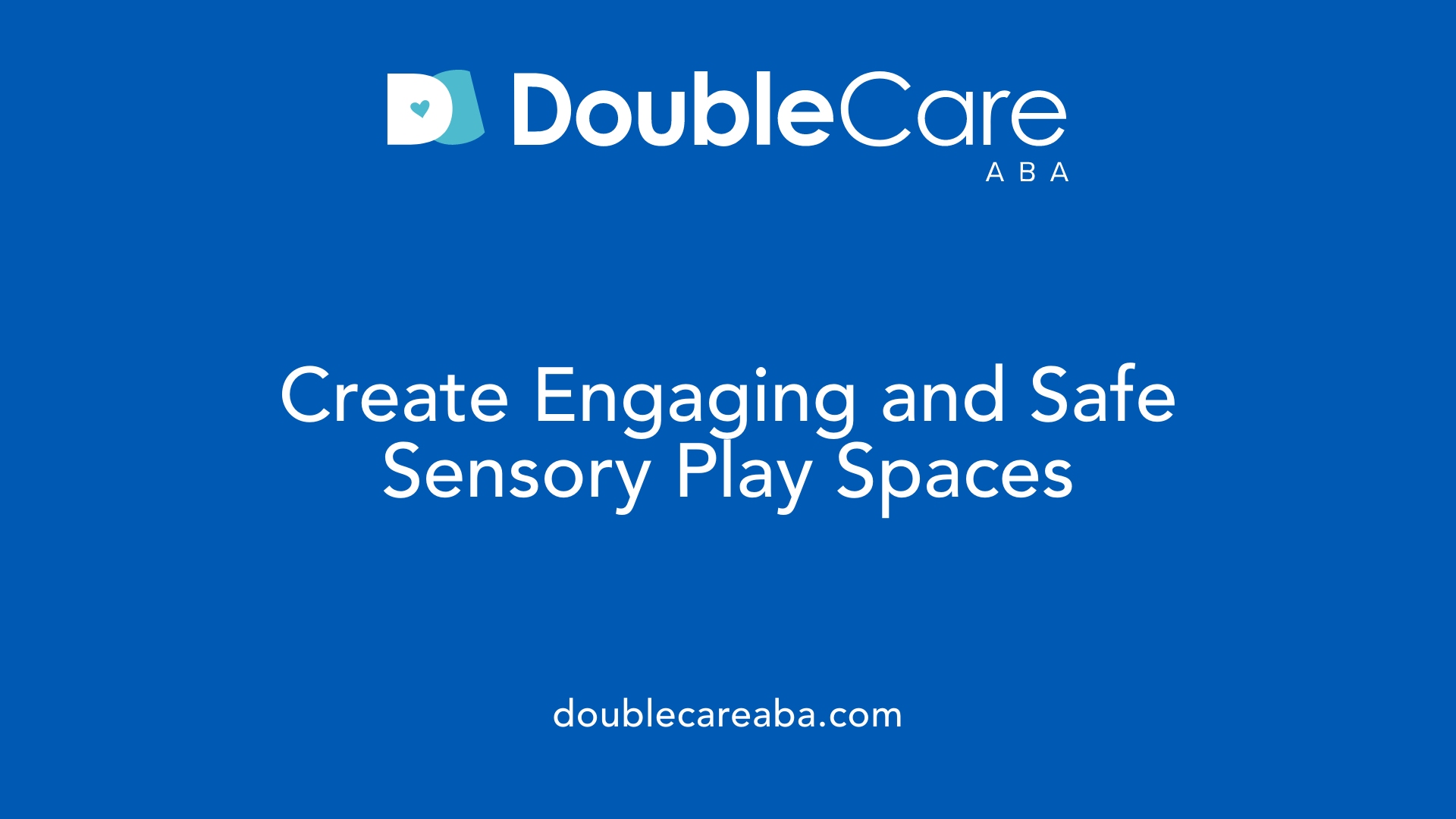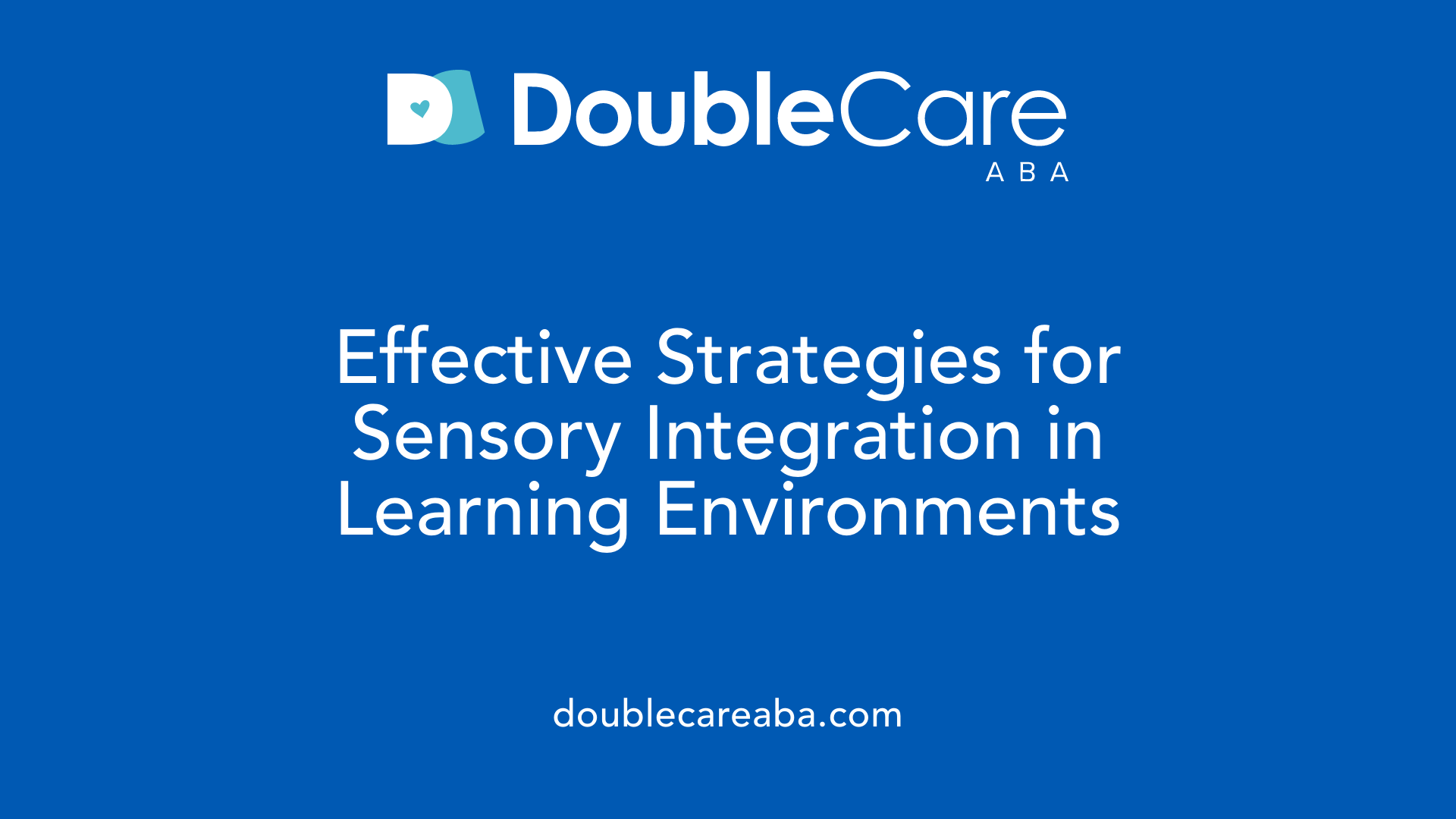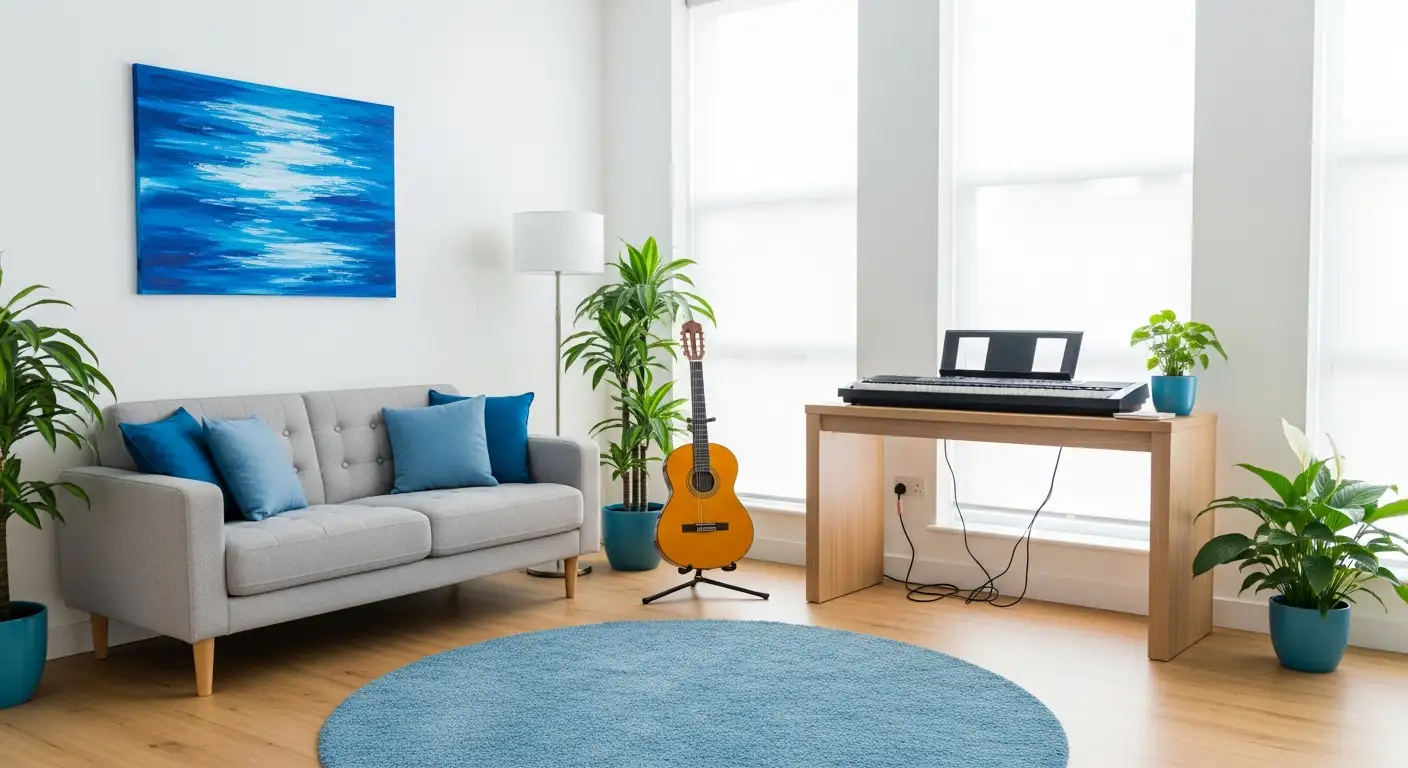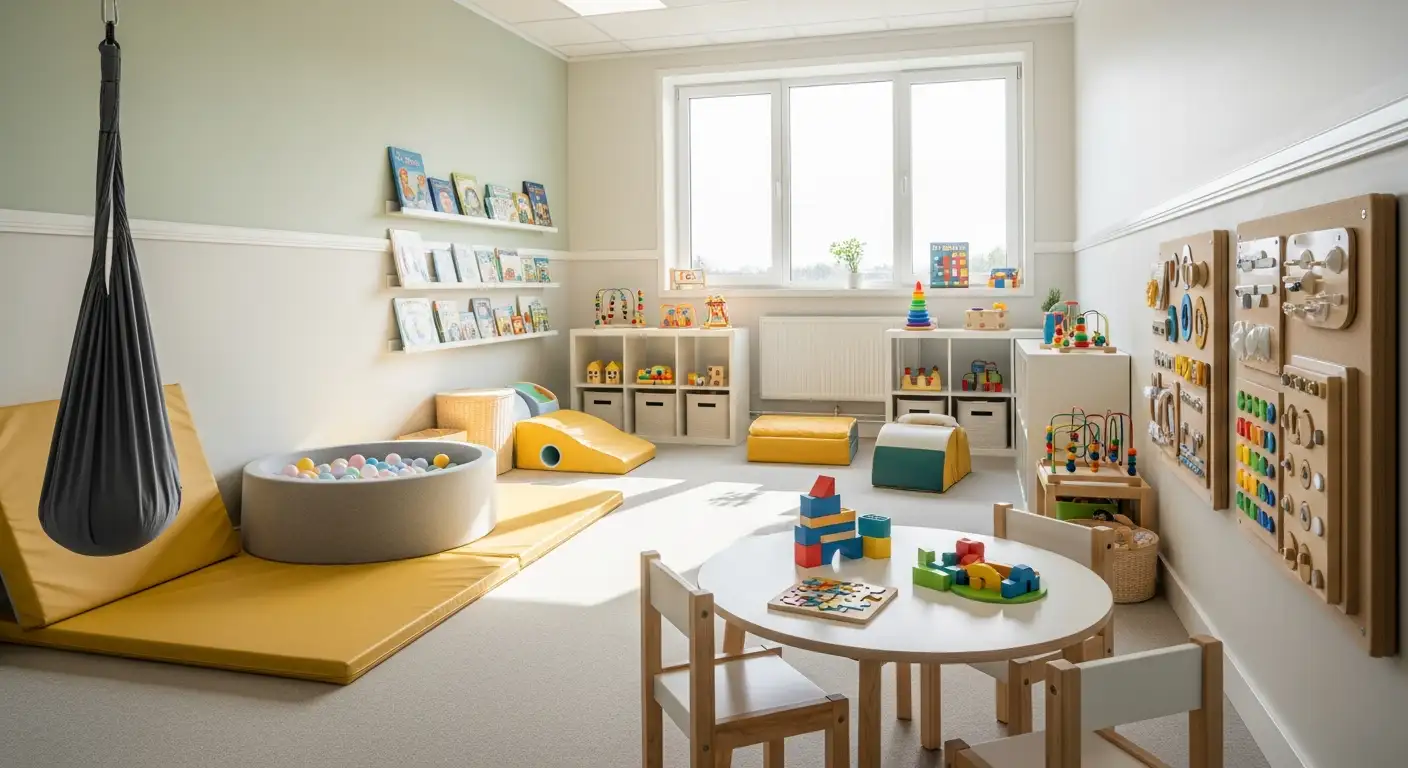Sensory Activities for a Child with Autism
Enhancing Development through Sensory Play in Children with Autism

Understanding the Importance of Sensory Activities
Sensory activities are integral to supporting children with autism spectrum disorder (ASD). These activities engage multiple senses—touch, sound, sight, smell, and taste—and include movement-based tasks that help children process sensory information effectively. Incorporating sensory play into daily routines can foster emotional regulation, improve motor skills, and promote social interaction, making a significant difference in the lives of children on the autism spectrum.
Categories and Types of Sensory Activities
 Sensory activities for children with autism are designed to stimulate different senses and support regulation of sensory input. These activities can be categorized into tactile, auditory, visual, olfactory, gustatory, vestibular, and proprioceptive types, each offering unique benefits.
Sensory activities for children with autism are designed to stimulate different senses and support regulation of sensory input. These activities can be categorized into tactile, auditory, visual, olfactory, gustatory, vestibular, and proprioceptive types, each offering unique benefits.
Tactile activities involve touch-based sensory exploration. Examples include playing with textured materials like slime, sand, or fabric scraps, finger painting, or handling sensory bins filled with beads, rice, or shredded paper. These help children become more comfortable with different textures and improve fine motor skills.
Auditory activities stimulate the sense of hearing. Listening to calming music or nature sounds, using noise-canceling headphones in noisy environments, or engaging with musical instruments can be beneficial. These help children manage sensory overload and improve auditory processing.
Visual activities involve sight and often include bright colors, flashing lights, or visual aids. For example, watching glow-in-the-dark water or engaging with visual story cards enhances visual tracking and focus. Visual supports can also foster understanding of social cues and routines.
Olfactory and gustatory activities incorporate smell and taste. Scented playdough, sniff jars, or tasting different safe foods can be interesting for children who seek or avoid certain smells and tastes. These activities support sensory integration and can help reduce sensitivities.
Vestibular activities involve movement and balance. Examples include swinging, jumping, spinning, or animal walks. These stimulate the inner ear and help regulate arousal levels, improving balance and coordination.
Proprioceptive activities focus on body awareness and muscle input. Activities such as pushing or pulling objects, heavy work tasks, or squeezing stress balls provide deep pressure, aiding in self-regulation and improving motor planning.
Incorporating these categories into a sensory program can support children in processing sensory information, developing motor and social skills, and managing emotions. It’s important to tailor activities to each child's sensitivities and preferences to ensure a positive experience.
| Category | Example Activities | Benefits |
|---|---|---|
| Tactile | Textured bins, slime, fabric scraps | Touch tolerance, fine motor development |
| Auditory | Calming music, noise-canceling headphones | Sensory overload management, auditory processing |
| Visual | Glow water, colorful visuals, visual stories | Focus, understanding social cues |
| Olfactory & Gustatory | Scent jars, tasting safe foods | Reducing sensitivities, sensory integration |
| Vestibular | Swinging, jumping, animal walks | Balance, body awareness, vestibular regulation |
| Proprioceptive | Heavy work, squeezing stress balls, pushing activities | Self-regulation, motor planning |
Creating a varied and soothing sensory environment fosters emotional regulation, skill growth, and enjoyable engagement for children on the autism spectrum. While each activity should be tailored individually, integrating these sensory types helps build a well-rounded approach to support development.
Practical Ideas for Setting Up Sensory Play Areas
 Designing a sensory-friendly environment for children with autism involves creating a space that is both safe and engaging, offering a variety of sensory stimuli tailored to individual needs.
Designing a sensory-friendly environment for children with autism involves creating a space that is both safe and engaging, offering a variety of sensory stimuli tailored to individual needs.
Start by organizing sensory tools and materials to ensure easy access and prevent overstimulation. Use baskets or bins to categorize items such as textured fabrics, squishy toys, and calming objects. Incorporate elements that stimulate different senses, including tactile walls made from household items like bubble wrap, textured paper, or fabric scraps.
Movement plays a crucial role in sensory integration. Include items such as exercise balls, rocking chairs, or mini-trampolines to provide vestibular input that can help with balance and calming. Incorporating a cozy corner with blankets, stuffed animals, and weighted vests creates a calming zone for deep pressure comfort.
Lighting is another important consideration. Use soft, adjustable lighting options like lava lamps or string lights to reduce harsh glare, and consider adding calming sounds or gentle music to create a soothing atmosphere.
To enhance engagement, personalize the space based on the child's interests and preferences. Let children participate in choosing toys or activities, which encourages independence and ownership of their sensory experiences.
Maintaining flexibility is vital. Regularly update the environment by adding new textures, adjusting lighting, or changing activities to match the child’s developing sensory needs. This responsiveness helps promote ongoing comfort, attention, and emotional regulation.
Organizing the sensory area with safety and simplicity in mind ensures that it is accessible and inviting without overwhelming the senses. By thoughtfully combining visual, tactile, movement, and calming elements, caregivers can create an accommodating space that supports children’s sensory processing and developmental growth.
Implementation Strategies in Educational and Therapeutic Settings

What are effective implementation strategies for sensory activities in educational or therapeutic settings?
Implementing sensory activities effectively requires a careful assessment of each child's unique sensory profile. Educators and therapists should first conduct individualized evaluations to identify specific sensitivities and preferences. This allows for the personalization of activities, ensuring they are engaging and beneficial for each child.
Creating an environment conducive to sensory play involves making modifications that promote comfort and safety. Adjustments such as using adjustable lighting, establishing quiet zones for calming, and providing flexible seating options can minimize overstimulation. Including sensory tools like fidget toys, noise-canceling headphones, weighted blankets, and textured objects supports children in self-regulation.
Incorporating structured sensory breaks or movement activities into the daily routine helps children manage sensory overload and stay engaged. Sensory stations equipped with various materials and textures can serve as dedicated spots for exploration and calming.
Visual supports are vital for reducing anxiety and fostering independence. Using picture schedules, visual cues, and clear routines helps children anticipate what to expect, making transitions smoother and interactions more predictable.
Multidisciplinary collaboration enhances the effectiveness of sensory strategies. Teams comprising educators, therapists, psychologists, and families work together to develop consistent approaches, share insights, and adapt activities as needed. This teamwork ensures that strategies are integrated seamlessly across settings, promoting positive outcomes.
Overall, combining assessment, environmental adaptation, visual supports, structured routines, and collaboration creates a comprehensive framework that supports children with autism and sensory processing challenges in both schools and clinics.
Resources and Ideas for Caregivers and Educators
 Supporting children with autism through sensory activities requires access to a variety of resources and creative ideas that encourage exploration and regulation.
Supporting children with autism through sensory activities requires access to a variety of resources and creative ideas that encourage exploration and regulation.
There are numerous tools and strategies available for parents, caregivers, and educators to facilitate engaging sensory experiences. Online platforms often feature detailed guides developed by professionals certified in autism support, offering step-by-step instructions for activities that stimulate multiple senses. Sensory kits, containing tactile toys, calming objects, and textured materials, help create a safe and inviting environment for sensory play.
Practical activity suggestions are plentiful and adaptable. These include simple, enjoyable options like finger painting, slime making, and setting up sensory bins filled with shredded paper, water, or sand. These activities promote motor skills, sensory processing, and language development.
Incorporating sensory tools such as noise-canceling headphones, fidget toys, and tactile surfaces can significantly help children manage sensory overload or under-stimulation. For example, using scented playdough or creating sensory bottles filled with glitter and water can engage multiple senses and help children self-regulate.
Structured routines and visual aids support children in understanding and participating in sensory activities. Including their favorite interests in activities also boosts motivation and focus.
Furthermore, activities that involve movement, like balance beams or sensory paths, promote gross motor skills and help release excess energy. These approaches can be tailored to each child's sensitivities and preferences, ensuring an inclusive and encouraging environment.
In sum, these resources and ideas aim to support sensory development, emotional regulation, and overall well-being for children with autism. They emphasize safety, fun, and educational value—making sensory play a meaningful part of learning and daily routines.
Calming Sensory Activities and Support Strategies
What are some calming sensory activities for children with autism?
Children with autism often benefit from calming sensory activities that help manage their arousal levels and promote relaxation. Deep pressure techniques are a popular method; these include massages, weighted blankets, or body wraps that apply gentle yet firm pressure to the body, creating a calming effect.
In addition to deep pressure, gentle movement activities can be effective. Swinging in a hammock or swing, jumping on a trampoline, crawling through tunnels, or sitting on wobble cushions can help children regulate their sensory input and feel more grounded.
Listening to soothing music or nature sounds can also foster calmness. Combining this with deep breathing exercises or mindfulness practices encourages relaxation and emotional regulation.
Creating dedicated calm-down spaces equipped with sensory tools allows children to retreat temporarily when overwhelmed. These quiet zones can contain weighted lap pads, soft lighting, or calming visuals.
Tactile tools play a crucial role in self-regulation. Fidget toys, textured drawing materials, slime, or sensory brushes can provide comforting tactile stimulation that soothes children, helping them regain composure.
Some additional sensory activities include using body socks, which envelop the child to provide deep pressure, and light touch experiments that offer gentle sensory input.
Implementing these strategies with sensitivity and understanding helps children develop self-calming skills and manage stress more effectively. Safety and comfort should always be prioritized, ensuring activities are enjoyable and non-invasive.
Supporting Sensory Development for a Better Future
Integrating a variety of sensory activities into daily routines and educational settings can significantly enhance the development, emotional regulation, and daily functioning of children with autism. Creating safe, engaging, and personalized sensory environments encourages meaningful participation, promotes neural growth, and empowers children to navigate their world with greater confidence and independence. With thoughtful planning, appropriate resources, and collaborative support, caregivers, educators, and therapists can make a lasting impact on the lives of children on the spectrum, fostering their growth towards a more inclusive and understanding society.
References
- 10 Sensory activities for autism
- 24 Classroom Activities for Kids with Autism | Waterford.org
- 7 Sensory Play Activities For Kids On The Autism Spectrum |
- Benefits of Sensory Activities for Children with Autism - ECCM.org
- 10 Sensory Activities for a Child with Autism - Foster Care Associates
- 41 Awesome Messy Play Recipes for Autistic Children - Gympanzees
- Sensory Play for Children with Autism: A Path to Growth and ...
- 10 Sensory Activities for a Child with Autism - Foster Care Associates
- 24 Classroom Activities for Kids with Autism | Waterford.org
- 7 Sensory Play Activities For Kids On The Autism Spectrum |
















